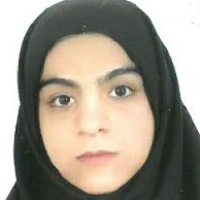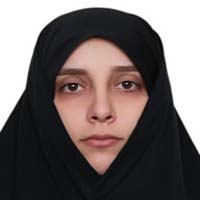Evaluation of redevelopment capacity in abandoned manufactory - industrial lands of Yazd city
The growth of population in cities and urbanization has led the managers and urban theorists to find possible and correct solutions for urban development. In 1980 and 1990, the redevelopment of abandoned lands was raised in the subset of the infill development policy. The policy addresses the redevelopment of zones within cities that are polluted, battered, abandoned. These zones have different potentials, such as access to urban equipment and facilities. In practice, the redevelopment of these lands may be associated with challenges such as the type of ownership, accessibility, and economic viability, etc. Measuring and ranking their redevelopment capacity can be an important planning step in returning these lands to the urban development cycle. In the past, Yazd city had some factories and active industries that are now located within the city due to the urban growth and expansion. Currently, these sites are abandoned and have environmental pollution. These sites lead to many social, economic, environmental, and landscape issues. These issues include reduced social security, lack of a sense of belonging, reduced desirability for settlement in these lands, devaluation of land, adjacent municipal waste disposal sites, unpleasant urban image, and spatial discontinuities. Therefore, the main purpose of this paper is to evaluate the redevelopment capacity of the abandoned lands (former Manufactory - Industrial Lands) in Yazd city.
This research is an applied type of research. The research employs a descriptive-analytical research method, and the data is collected by bibliographic study and interviews. Delphi, ANP, Super Decision, and Arc GIS software were employed for data analysis. In the first step, the criteria and the indices are extracted from theoretical literature. The criteria and indices have been scored by Delphi method, and accordingly, the weight of each criterion is defined by the ANP method in the Super Decision software. In the next step, industrial zones of Yazd city were recognized on the basis of weighted criteria in Arc GIS software. Finally, Yazd industrial zone redevelopment capacity has been achieved in 5 classifications (very high development capability, high development capability, medium development capability, low development capability, and very low development capability).
According to the results of the network analysis process in Super Decision software, the following criteria are prioritized: 1-Site physical status with 0.451 coefficient of significance, 2- Economy with 0.387 coefficient of significance, 3- Infrastructure with 0.161 coefficient of significance. Respectively, location in the city (0.223), owner willingness or activity status (0.220), access to a network of passages (0.118), quality of buildings (0.117), area (0.114), ownership (0.094), price (0.036), access to public transport (0.033), burnout status (0.027) and access to utilities (0.013) are significant sub-criteria. The results show that the lands in the middle and central texture of Yazd have very high and high development capability, which indicates the importance of the location in the city. The lands that have the highest redevelopment capacity have the best access to the pathways. Therefore, location in the city, owner willingness (activity status), access to passages and areas are of high importance. Also, the low ratio of highly developed land area to total land area (35.8) indicates the low redevelopment capacity of manufactory-industrial lands. These results can help urban planners and managers prevent unnecessary growth and expansion of the city in the future and mitigate the low density and urban dispersal.
Redevelopment of lands is a complex and multidimensional process in environmentally deprived sites with urban facilities and infrastructure. This process requires supportive laws and regulations, social participation of owners, citizens, and attention to outreach projects. Most redevelopment projects are costly at first, but if redeveloped to suit the site's features properly, it will bring economic benefits in the long run. This approach can respond to the cities' need for growth and development due to population growth and urbanization and inappropriate use of urban land, leading to good land management. It can also bring vitality, dynamics, social identity, and quality of life back to inefficient urban areas and contexts.
- حق عضویت دریافتی صرف حمایت از نشریات عضو و نگهداری، تکمیل و توسعه مگیران میشود.
- پرداخت حق اشتراک و دانلود مقالات اجازه بازنشر آن در سایر رسانههای چاپی و دیجیتال را به کاربر نمیدهد.



